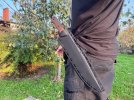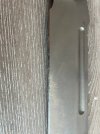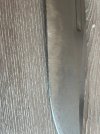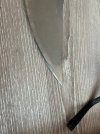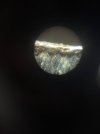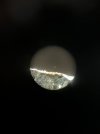I want a 40-inch katana...Here I thought I was the only one......
I find a community where there are tons of people like me.
The BladeForums.com 2024 Traditional Knife is ready to order! See this thread for details:
https://www.bladeforums.com/threads/bladeforums-2024-traditional-knife.2003187/
Price is $300 $250 ea (shipped within CONUS). If you live outside the US, I will contact you after your order for extra shipping charges.
Order here: https://www.bladeforums.com/help/2024-traditional/ - Order as many as you like, we have plenty.
I want a 40-inch katana...Here I thought I was the only one......
I want a 40-inch katana...
I find a community where there are tons of people like me.

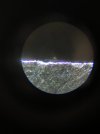
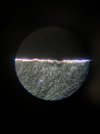
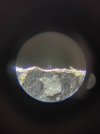
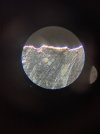

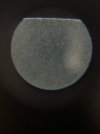
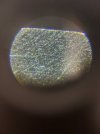
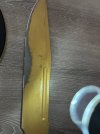
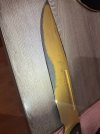
I agree, I notice literally the same thing.Wow! Thank you for sharing that M Moorik !! It's incredible how little deformation there is even after striking it on a concrete block!
I can say that after an hour of chopping through super dense buckthorn bushes (trees at this point), I just wash it, wipe it off and it's good as new! (for both 3V and ZTuff)
Well, that's pretty much what I'm planning to do, but I need some time to figure out how to properly record such a video. You know, I'm thinking about doing them without editing, at least for the tests, but with sharpening and restoration, with editing, because it's long and boring to watch me just sitting and sharpening a knife for two hours.M Moorik now you just need to record the testing process so everyone gets to see just how tough Huntsman knives are in reality, and then the restoration sharpening and slicing kitchen towel ASMR
To be honest, I find your testing much more helpful than straight up destruction tests. Everyone knows that it doesn't matter how tough something is, destruction is always possible. If there's a will, there's a wayBut yes, pushing these knives to the absolute limit of proper usage and maintenance, with the goal of keeping it alive for generations to come. That is something new and unique and don't see anywhere else!

Cat purring, the sound of a rainforest, the sound of restoring the Tyrant's cutting edge with a very coarse abrasive.You could always do a no-edit time lapse video, or just speed up the playback. Or just a no-edit real time hour long sharpening sound video for the ASMR factor. It's kind of like watching a sun set. I'd totally be mesmerized by a video of Tyrant Bowie chopping through wood, bone, nails, concrete blocks etc, and then watching the motion of sharpening and enjoying the sounds etc.
It's like having those hour long cat purring or rain forest audio in the background. I'd put hour long knife sharpening and slicing paper sounds in the background to sooth my nervous system!




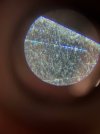
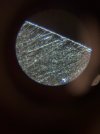
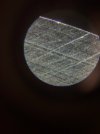

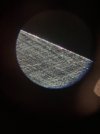

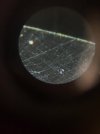
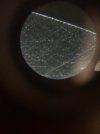
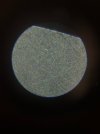
Are you still selling the cell beast legacy stuff steel machete?So, what can I say about the Fell Beast in Z-Tuff steel?
It handled all the tests wonderfully. I re-sharpened it to my own liking, the way I prefer, BUT — the factory edge was extremely good. I used it for the first week without touching it, and it held up great.
As for the blade itself — the balance, the grind, and, most importantly for me, the steel. It’s excellent. The Fell Beast went through a lot: chopped down plenty of trees, I bent it, struck metal with it, and so on — and everything can still be resharpened by hand. On top of that, the steel is very easy to realign on a honing rod in the field. Z-Tuff is really great in that sense: you can touch up your blade even outdoors, and it will keep cutting.
As for the Fell Beast itself — even when the edge gets dull, it still cuts thanks to its geometry and excellent balance. As someone said on the forum, the blades Huntsman makes are “the 1% of the top 1%,” and you can literally see that even under a microscope.
P.S
I wrote part of this with the help of a translator, and the full text didn’t fit, so I had to shorten it a bit.
I hope the information I shared helps you understand just how awesome Huntsman’s work really is.
I did everything the same, and twice as much with Tyrant, as you saw from my posts sharpening at 0.25 microns
I will definitely do a review under the microscope about Tyrant too
There's twice as much information
Ah bro,I am just regular forum folk,who just making some sharpening content and microscopy/videos of sharpness,sometime just showing some interesting researchesAre you still selling the cell beast legacy stuff steel machete?
Brother! I love seeing stuff like this. Thanks so much for taking the time to generate all this data. I don't have a microscope or the skillset or tools to sharpen to 15K, so its incredible to see what happens when the steel gets there!3/2, and this is 5000 grit.
The photo is a bit blurry, but I swear, when I looked at the photo quality, it seemed excellent to me—I think it’s because I was constantly looking through the microscope and getting distracted by the lamp.
Now its close to the mirror polished
View attachment 3017011
2/1 micron, and this is 10,000 grit.
Here I’m getting a perfect mirror, and everything looks almost flawless.
View attachment 3017013
1 micron and 15,000 grit.This is what we're here for.Just look—honestly, I think the last 2 sharpenings of this Z-Tuff Tyrant, in combination with my new abrasives, are currently my best result that I've reliably learned to achieve consistently.
View attachment 3017017
And now, I'll show you how it looks under my new microscope. I could have set it up better, but for now, I'm giving the best I can.
Well, in the classic way, here's the result of how it's sharpened. To be honest, overall, it looks the same as in the previous video; I was just curious to get exactly the same result—actually, even a bit better.
What can I say now, after live comparisons, sharpening, a huge number of tests, and microscopy?
For a chopper, in my opinion, Z-Tuff steel is even more suitable than 3V.
At the very least, I can clearly see that it's tougher—I'd say by about 40%. It's probably not entirely accurate to put it in terms of pure numbers, but overall, other tests (not just mine) confirm this.
In reality, for such large blades where you'll be chopping and subjecting them to loads that aren't standard—and sometimes not even intended—Z-Tuff steel is an extremely good choice. And it seems to me that if we develop this idea, it could become something like a new branch.
What fascinates me most is how incredibly well it machines.
For the purpose this blade is designed for, Z-Tuff steel has no equal.
I repeat: I've tested both, under a massive amount of stress and trials.
I really liked—and still like—3V, but Z-Tuff, in my view, could become a new branch for big blades. It was extremely interesting and exciting for me to work on this, and I hope my review—or should I call it a study? Not too pretentious, I hope? In any case, I'm glad to be helpful!
I still have a couple available, but they are coated or have stonewashed flats with satin bevels. I also have one factory second thats fully stonewashed. Let me know if you are interested.Are you still offering the fell beast legacy prime z tuff steel machete?
Yeah, I've noticed the same thing—even after long sessions cutting through hard wood, Z-Tuff still slices paper, and yeah, it stays aggressive. I don’t know the exact reason, but it’s insanely aggressive in terms of cutting performance. I really love that about it.Brother! I love seeing stuff like this. Thanks so much for taking the time to generate all this data. I don't have a microscope or the skillset or tools to sharpen to 15K, so its incredible to see what happens when the steel gets there!
I after a year of personal use and abuse, Z tuff is my go to for big blades hands down. It cuts aggressively, has pretty good edge holding all things considered, and is easy to sharpen. Oh, and its insanely tough. Whats not to love?
Perhaps my favorite thing from my personal experience is that despite its low carbide content, this stuff does NOT wear smooth when it gets dull. Even with a highly degraded edge, you can still cut. Something like 52100 or AEBL goes smooth quick and will lose all cutting capacity in rapid fashion (even though they can start with a screaming sharp edge). Z Tuff has a much more gradual loss in cutting ability over time and cuts more aggressively over the entire life of the edge.
